
What if drawing lines could change your mind? Neurographica is more than creative expression.
It’s a method backed by neuroscience. Each curve rewires your thinking. Each circle activates your potential.
Neurographica® helps reshape thought patterns through drawing. Each line activates neurons, sparking change. Unlike traditional art therapy, it follows a clear structure.
Pavel Piskarev designed Neurographica to access the subconscious mind.
This method blends creativity, intention, and transformation.
- It’s drawing with purpose.
- It’s art that rewires you.
- It’s not art therapy — it’s visual neurohacking.
Let’s explore what makes Neurographica® so powerful.
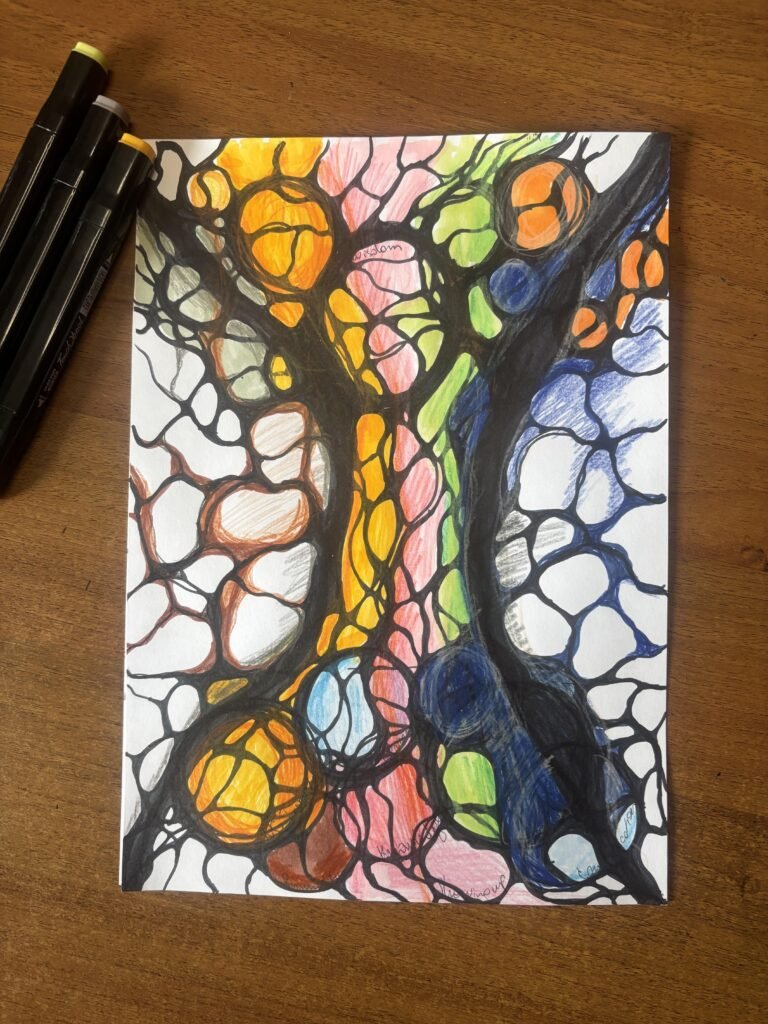
Neurographica® vs. Expressive Art Therapy: Know the Difference
Neurographica® is not art therapy. It’s a structured, meditative method based on scientific principles.
It was created by Russian psychologist Pavel Piskarev, who coined the term “neurographica.”
This kind of art activates brain cells and creates new neural pathways through specific lines and shapes.
While many art therapists use expressive art for emotional release, neurography follows laws and patterns identified by various schools of psychology.
Neurography Is Backed by Psychology, Not Just Expression:
- Gestalt psychology
- Analytical psychology
- Neuropsychology
- Psychosynthesis
The neurographic line can be used to shift thinking and behaviour. It’s not just making art.
Unlike general therapeutic art, Neurographica uses visual thinking and mindfulness to reshape inner states. The drawing process is deliberate. It helps individuals explore their emotions and form new insights.
Neurographica artwork resemble neurons. Each neurographic drawing supports self-awareness and emotional intelligence.
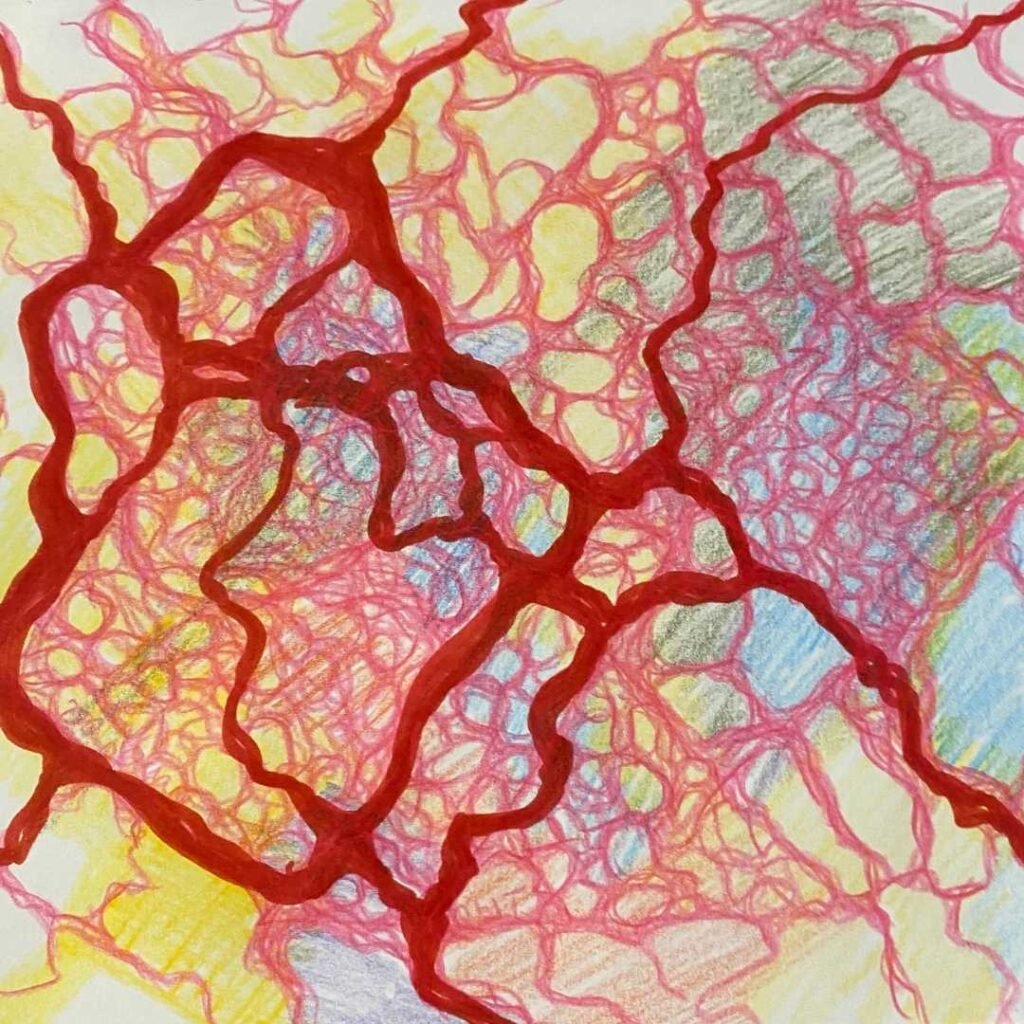
Art Therapy Vs Neurographics
👉 In expressive art therapy, people explore and communicate feelings through artistic expression.
👉 In Neurographica, the goal is transformation through specific algorithms and meditative repetition.
Engaging in creative activities offers potential benefits, but not all art forms rewire the brain.
Neuro Art does. Neurographica does.
It provides us with simple steps to create a sense of calm and self-discovery.
Whether you’re using a felt tip pen or a sharpie, the goal isn’t just to create a beautiful artwork.
It’s to draw the line to shift your life.
👉 Download the Neurographica Step-by-Step PDF Guide and start your transformation today.
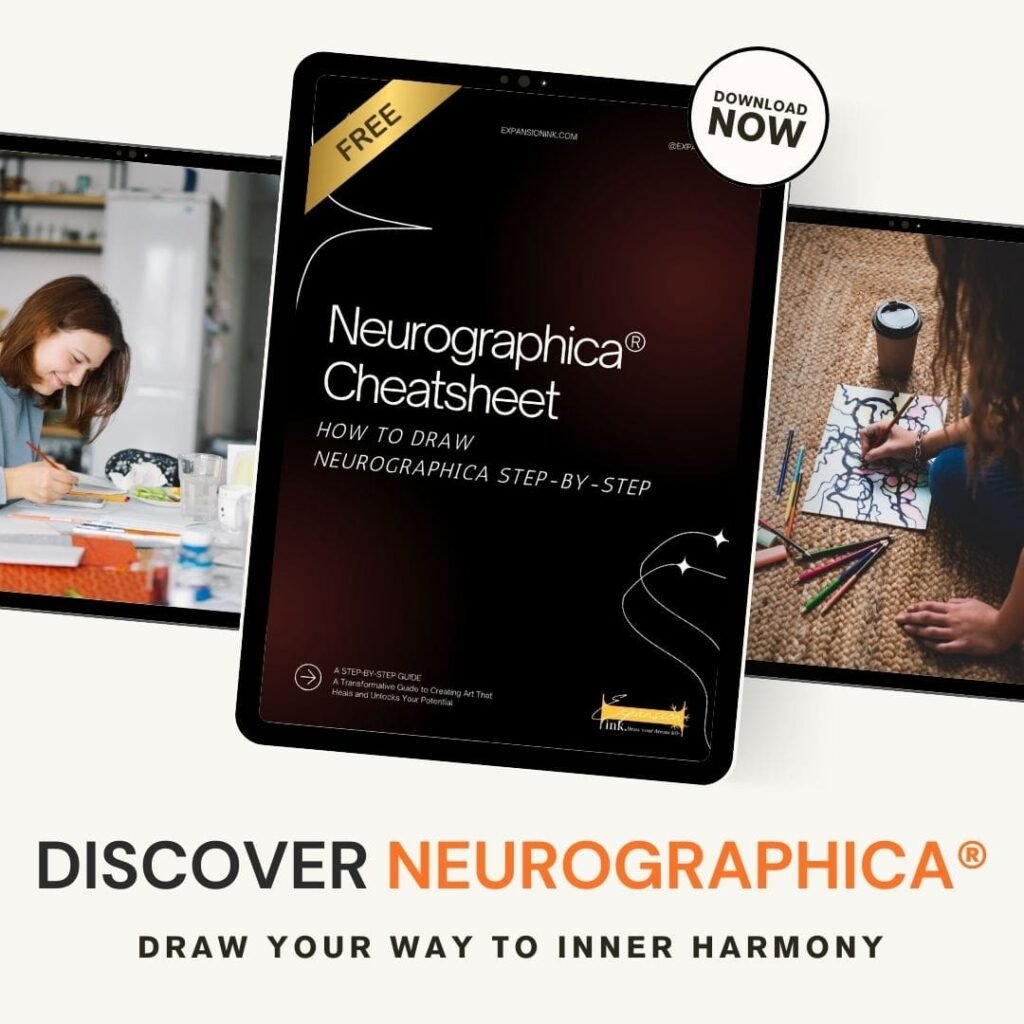
How Neurography Influences the Brain – Neuroscience Behind the Method
Neurography activates neuroplasticity—the brain’s ability to rewire itself.
Drawing non-repetitive lines stimulates new neural pathways.
This process breaks habitual thinking patterns and invites new behaviors. Your subconscious engages deeply during the unpredictable flow of the drawing.
Stress and emotional tension are released through symbolic image processing.
Key Neurological Effects:
- Forms new neural connections by drawing biomorphic lines
- Stimulates both hemispheres of the brain simultaneously
- Activates mirror neurons, enhancing empathy and self-perception
- Shifts from conscious control to subconscious access
- Encourages insight, clarity, and emotional balance
Why Neurographica Works:
- Symbols are processed faster than words — our brain evolved with imagery
- Abstract shapes like circles and lines are interpreted as emotional “codes”
- Rounding intersections mirrors inner conflict resolution
- Irregular lines resist mental autopilot, triggering cognitive flexibility
- Color integrates fragmented parts of experience into a coherent whole

Cognitive Benefits of Drawing Neurography:
- Enhanced focus and presence
- Improved emotional regulation
- Strengthened problem-solving skills
- Greater access to intuition and creativity
This isn’t magic — it’s structured neuro-aesthetic training for your mind.
And yes, anyone can do it — no art skills required. Just draw and let the brain rewire.
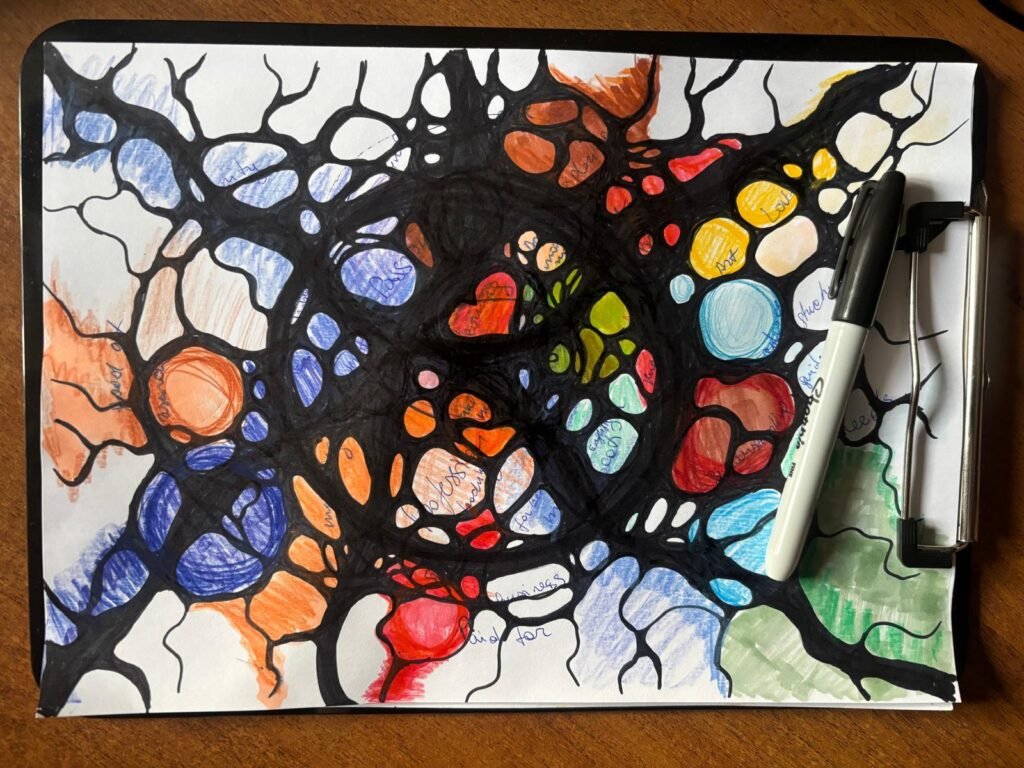
How Neurographic Lines Activate Neural Pathways – The Brain and Art Connection
Art is a therapeutic tool, but Neurographica goes deeper.
The process of drawing curved lines and softening sharp corners matters. Each loop helps form new connections in the brain.
This meditative state supports self-exploration and emotional release.
It allows individuals to explore feelings and emotions non-verbally. Neurographic lines can lead to insights and positive changes in thinking.
They reduce stress levels and contribute to a sense of well-being.
This isn’t just about artistic skills. It’s about activating your creative potential. Educators and art teachers use it in educational settings with individuals of all ages.
Drawing with resistance disrupts routine thought patterns. The brain responds by seeking new, creative solutions.
Why It Works Neurologically:
- Non-repetitive, biomorphic lines resemble organic brain structures
- Movement + intention = activation of both motor and cognitive circuits
- Resistance in drawing mimics learning challenges that enhance plasticity
- Curves and intersections resemble synaptic connections
- Each intersection is rounded, symbolizing emotional integration
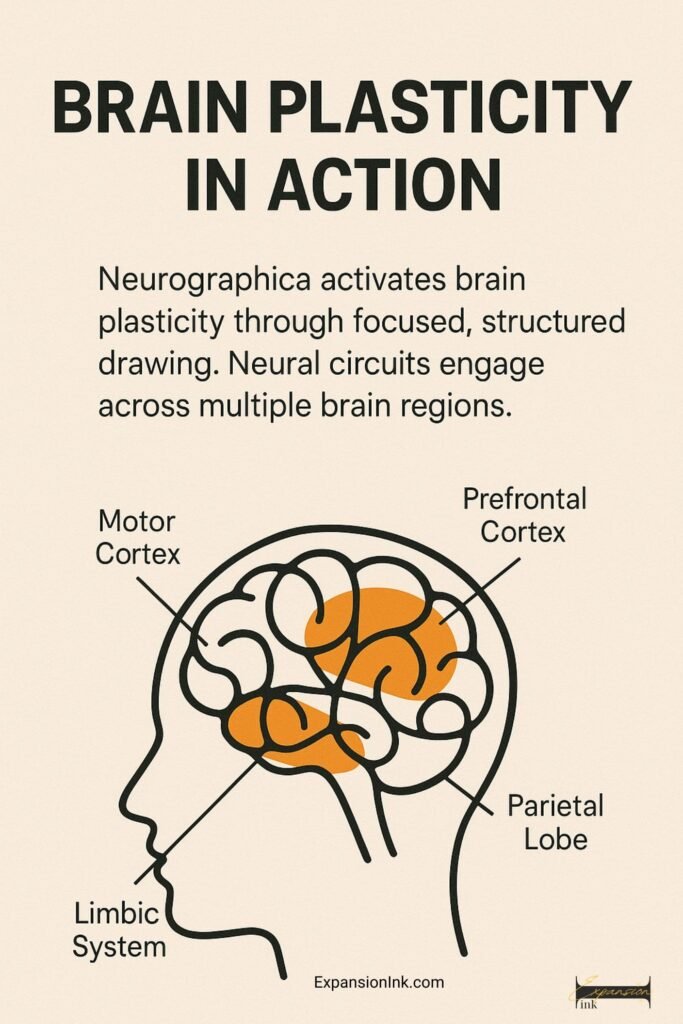
Brain Areas Engaged:
- Prefrontal cortex (decision-making and focus)
- Hippocampus (memory and learning)
- Amygdala (emotional processing)
- Motor cortex (fine hand movements)
Drawing Acts as a Neural Trigger:
- It translates inner experience into external form
- Helps process unresolved emotions without words
- Anchors new insights through visual repetition
- The visual system reads the image as a real experience
👉 In short: neurographic lines are movement-based meditation for your brain. They bypass logic and invite transformation — one curve at a time.
Want to experience it yourself? Download the Neurographica Step-by-Step PDF and start rewiring your inner world today.
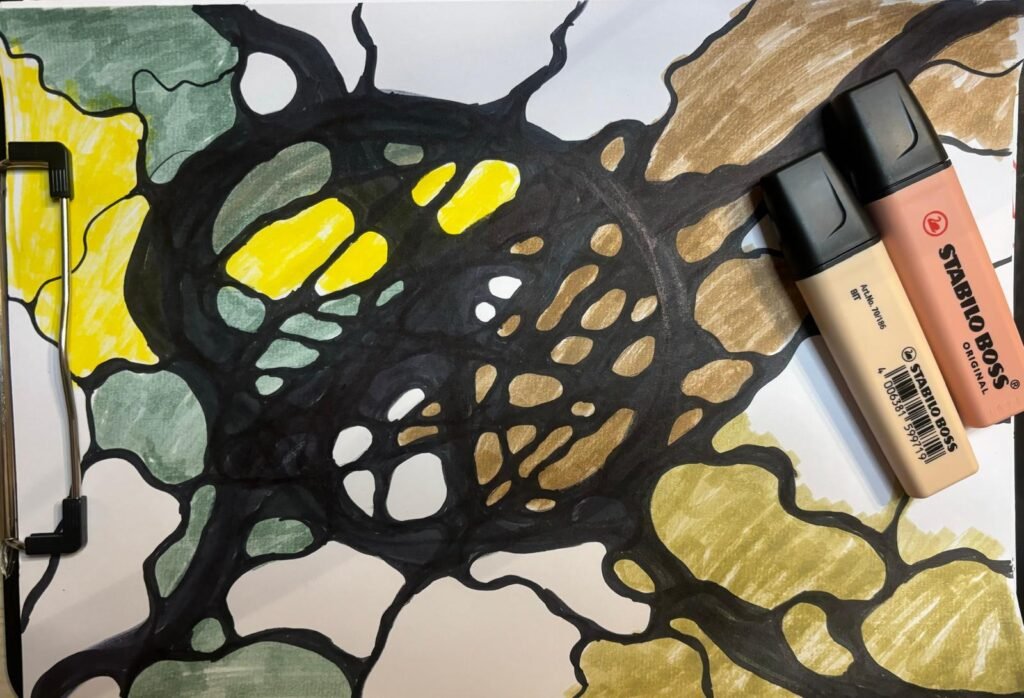
Why Neurographica Works: Structured Visuals for Deep Inner Change
Neurographica® isn’t random drawing.
It’s a structured, repeatable process for real inner change.
The method uses various techniques to guide the mind toward resolution. You draw a long, curved line—not just for beauty, but to shift emotion. It’s a non-verbal way to process things that need attention.
The process of creating brings hidden emotions to the surface.
This isn’t a therapeutic process, but it still helps with getting the desired result, both mentally and emotionally.
It unlocks creative thinking and deep self-awareness.
People often feel a yearning to change, but don’t know how. Neurographica® gives you a map.
👉 Download the Neurographica Step-by-Step PDF Guide and start your inner transformation today.
Explore More Neurographic Art with ExpansionInk
Neurographic art blends structure and self-expression in powerful ways. It’s more than drawing—it’s a transformation on paper.
ExpansionInk offers tools, insights, and support for your journey. You’ll learn how to draw a long neurographic line with intention. Discover recent posts, new techniques, and real-world results from our global community.
Ready to begin?
👉 Download the Neurographica Step-by-Step PDF Guide and start drawing your way to change today.

What does Neurographic Art do to the brain?
It activates new neural pathways, reduces stress, and supports emotional processing through structured drawing.
What is the theory of Neurographica?
Neurographica® is based on the idea that drawing specific lines and shapes rewires thought patterns and emotional responses.
Is Neurographics legitimate?
Yes. While not therapy, it’s a structured method backed by principles from psychology, neuroscience, and visual thinking.

Pingback: Why Neurographica Is Powerful Brain Training | ExpansionInk
Pingback: How Does Neurographica Work - Step-By-Step Tutorial